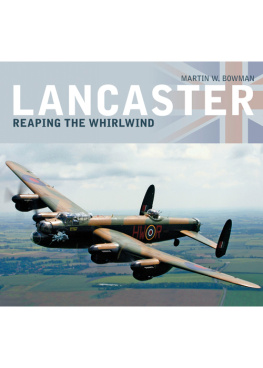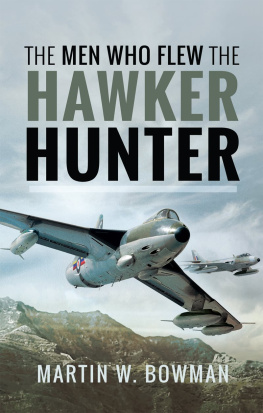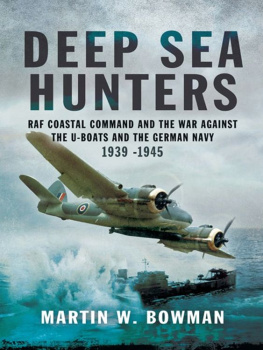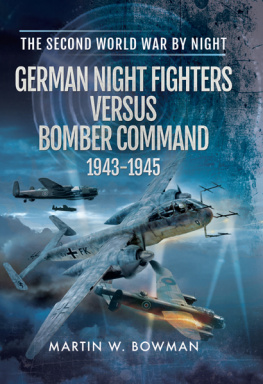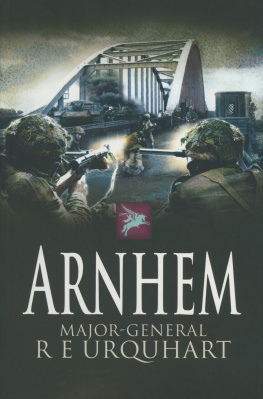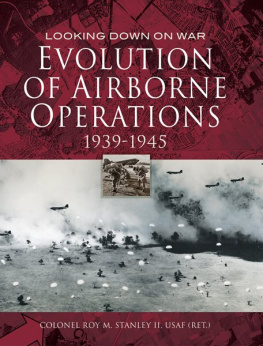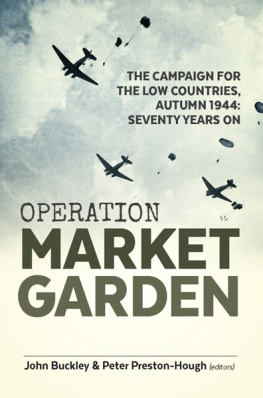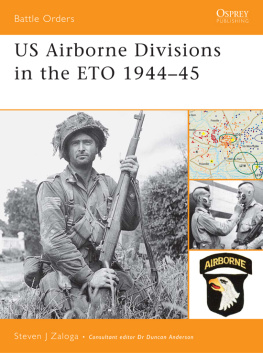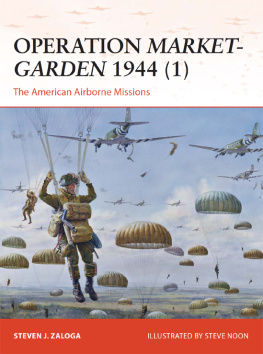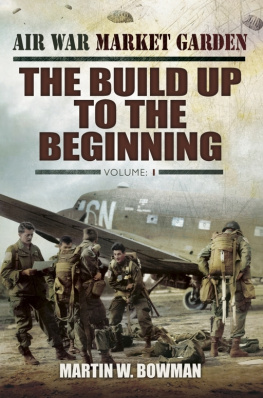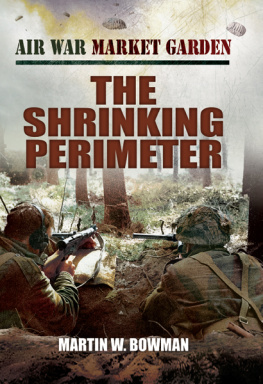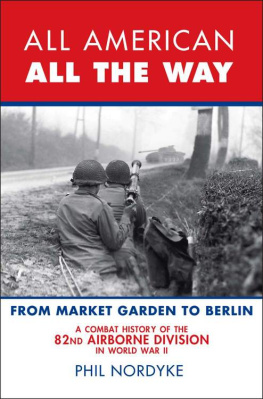I am enormously grateful to the following people for their time and effort and kind loan of photos etc, not least to my fellow author, friend and colleague, Graham Simons, for getting the book to press-ready standard and for his detailed work on maps and photographs: My thanks and sincere appreciation to Nigel McTeer, whose uncle, a man by the name of Maloney, fought at Arnhem and killed two Germans, one with a pair of scissors and one by putting sand in his mouth. Thanks are due in no small measure to The Pegasus Archive website and the Maroon Berets online news magazine for the wonderful collections of first-hand accounts faithfully compiled by the Association, its members and siblings of members. And to Deryk Wills, author of Put On Your Boots and Parachutes! My other favourite books on Arnhem and Market-Garden include The Longest Day by Cornelius Ryan, A Tour of the Arnhem Battlefields by Major John Waddy, Arnhem Lift by Louis Hagen MM and of course Arnhem 1944: The Airborne Battle by Martin Middlebrook. My sincere thanks as always to Libby, Jenny and Lesley at the 2nd Air Division Memorial Library in Norwich. And also to Jim Borrett.
Chapter 1
Mad Tuesday
After leaving Flers in the south of Normandy in August we went around Paris into Belgium,
through Brussels, on to the Albert Canal and Antwerp. In Belgium there were that many people
out on the streets waving and cheering. We were among the first troops through in force and not
just to be chased back again like in 1940. We were moving forward, when all of a sudden there was
a stop. There had been a bridge blown and they couldnt get over so they had to bring the Engineers
up to build a bridge across. We spent a day there, just amusing ourselves and talking things over
and wondering what was going on. There were a lot of American aircraft and the RAF going over
in force to pummel Germany. Then we were told to pack up and we were on the move again. All the
Division was on the move, heading to Eindhoven.
Private Ronald Ritson RAMC, a member of 26 Field Hygiene Section.
It was a fine, calm morning in the peaceful streets of Arnhem on Monday September the 11th. With no presentiment of the events of the following week most of the population of 94,000 in this quiet Dutch town were a little excited at the approach of the liberation fifty miles south, for the battered and panic stricken Wehrmacht everywhere was in full retreat. In towns and villages on the border with Belgium the German Army was fleeing into Holland as fast as their legs and improvised transport would allow. On the outskirts of Eindhoven, home of the giant Philips Works, the sound of artillery fire could be heard coming from the Belgian side of the border. From Eindhoven north to Nijmegen, German engineers were hard at work dismantling anti aircraft guns and blowing up ammunition dumps while headquarters staff burned documents and papers and senior officers and generals fled in their staff cars. Many were only out to save their own skins, their troops having to follow them in whatever motor transport was available while others were resorting to bicycles, horse-drawn vehicles and even childrens scooters when nothing else could be found. They were joined on the roads by throngs of scared German civilians and bewildered Dutch, Belgian and French Nazi sympathisers who had taken flight now that the days of the Third Reich were numbered. The writing had been on the wall three months earlier when then Allies had stormed ashore on the beaches of Normandy on D-Day, 6 June and had breached Hitlers Atlantic Wall.
In Arnhem a small group of staff officers of Heeresgruppe (Army Group) B which comprised the Wehrmacht armies in northern France, Belgium and the Netherlands set out in search of a new headquarters for Generalfeldmarschall Walther Model. Ever since 35-year-old Leutnant Gustav Sedelhauser had been appointed general headquarters administration and transportation officer the headquarters had never remained anywhere for more than a few days. But Sedelhauser desperately wanted somewhere peaceful where he could get his laundry done. Arnhem, capital of Gelderland, lying on the flat lands alongside the northern bank of the Neder Rijn or Lower Rhine, appeared to have everything: a fine road net and excellent accommodations. It was something of a spa. Immediately to the north the ground rises sharply. Nowhere is the rise more than 250 feet, but the contours are steep and this ridge of high land along the northern bank of the Rhine is broken by little valleys and quite different from the flat, empty fields of southern and western Holland. To the east and the west lay suburbs of solid detached houses and hotels, standing in their own grounds, the countryside around them well wooded. Out to the west it resembled parts of the lowlands of Scotland with plantations of firs and open pastures and folds of rough ground covered with a scrub not unlike broom. The main road from Utrecht comes in from the west. Sedelhauser now drove along it to Oosterbeek, a small prosperous village just two and a half miles from the centre of Arnhem, his search for potential headquarters having drawn a blank. Beekbergen and Ruurlo, where he had inspected the 9th and 10th SS Division HQ and then the II SS Panzer Corps command post at Doetinchem had all proved unsuitable, as had Arnhem.
Oosterbeek was set deep from the road among landscaped villas, tree-lined roads and a group of neat resort hotels so far untouched by the war. Sedelhauser was immediately impressed by the facilities and the accommodations on offer at the Hartenstein - a gracious, white rectangular building with tall windows and spacious crescent-shaped lawn - and the smaller, two-storey, tree-shaded Tafelberg nearby with its glassed-in veranda and panelled rooms. He promptly recommended them to the Chief of Staff, Generalleutnant Hans Krebs, as perfect for Army Group Bs headquarters. Sedelhausers suggestion met with his generals approval but it found no favour with 37-year old SS Haupsturmfhrer Sepp Krafft commanding the SS Panzergrenadier Ersatz und Ausbildungs (Training and Reserve Battalion 16) who after being ordered back and forth across Holland was now being ordered, by a Wehrmacht officer at that, to leave after just five days in Oosterbeek. He had 440 men billeted in the village and another 1,000 SS recruits were due to arrive for training. Krafft was ambitious and took orders only from his SS superiors. He protested vigorously but calmed down when he was told that he was being moved out of Oosterbeek because Generalfeldmarschall Models headquarters was moving in.
Otto Moritz Walther Model was a senior officer of the old school, squat, broad-beamed and a harsh, forceful, energetic man of 54. Appointed to command a division on 13 November 1940, by January 1942, with the German front before Moscow on the point of disintegration, Model had risen to army commander. Despite his humble origins - he was a Prussian of non-aristocratic background - he always tried to appear as a Prussian aristocrat, even down to his habitual monocle fixed in the Prussian manner to a scarred and sternly handsome face. He had risen to the rank of field-marshal by virtue of intellect, ambition and Hitlers patronage rather than through the influence of the old, traditionally military families. He gave Hitler his political support and in return was allowed much more freedom of action than other German generals had the courage to demand. He had been awarded the Iron Cross First Class and Knights Cross with Swords in the First World War. Hitler had called Model the saviour of the Eastern Front where he had shown himself a master of defensive action in Russia and Poland and had earned his reputation as the Fhrers fireman, able to take charge of a rout and turn it into a counter-attack. His task now was to stem the tide on the Western front. General Hasso von Manteuffel the great tank commander said that Model was a very good tactician and better in defence than in attack. He had a knack of gauging what troops could do and what they could not do. His manner was rough and his methods were not always acceptable in the higher quarters of the German Army, but they were both to Hitlers liking. Model stood up to Hitler in a way that hardly anyone else dared to and even refused to carry out orders with which he disagreed.


